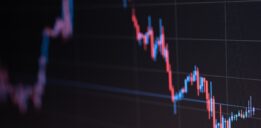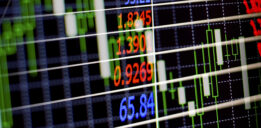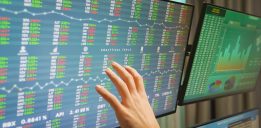Billionaires Dumping Stocks, Stock Market Crash on the Way
It doesn’t matter if you’re interested in sports, business, or a particular hobby, it’s important to keep an eye on what the leaders in the field are doing. After all, they didn’t get to the top of their game by chance. And if you want to succeed, it might behoove you to emulate what they’re doing.
When it comes to investing, chances are really good that following the smart money can help you make a lot of money. Who is the smart money on Wall Street? The most influential, innovative investors in America today are Warren Buffett, George Soros, and John Paulson.
Their understanding and insight has helped them amass billions of dollars and millions of followers. So it would be a no brainer to at least see where the smart money, the titans of Wall Street are putting their money. With the stock market trading at record levels you’d think they’re snapping up U.S equities.
Nothing could be further from the truth. They’re hunkered down and shedding stocks like they’re prepping for a stock market crash. Mainstream analysts might be calling for smooth sailing on Wall Street, but their stock market forecast suggests the markets are in for a lot of pain.
This begs the question…should we be doing the same? Are we in for a stock market crash in 2015 or 2016?
If actions speak louder than words, Warren Buffett is predicting some sort of calamity on Wall Street in 2015 and or 2016. Perhaps not a full blown crash, but at the very least, a number of serious corrections.
Over the last few of years, Warren Buffett’s holding company, Berkshire Hathaway has been shedding stocks that have exposure to U.S. consumer spending. At the end of the second quarter of 2012, Berkshire Hathaway held 10.33 million shares of health care giant Johnson & Johnson (NYSE/JNJ). At the end of the second quarter of 2014, Berkshire Hathaway held just 327,000 shares. Over just two years, Berkshire Hathaway has lost total confidence in one of the country’s most popular consumer products company, disposing 96.8% of its holdings.
Another popular brand that Berkshire Hathaway has soured on is Kraft Foods Group, Inc. (NASDAQ/KRFT). In the second quarter of 2012, Berkshire Hathaway held 58,826,390 shares. Two years later and Warren Buffett has dumped 99.7% of those shares, bringing the share total down to just 192,666 shares.
Another consumer stalwart, The Procter & Gamble Company (NYSE/PG) continues to be one of Warren Buffett’s top holdings but he’s trimmed his stake. Today, Berkshire Hathaway owns 52,793,078 shares of Procter & Gamble – or two percent of the company. Sounds good right? Four years ago Berkshire Hathaway held 59.6 million shares. In just four years, Warren Buffett has dumped 11.5% of his holdings in Procter & Gamble.
If Warren Buffett’s predictions are accurate, the American consumer will continue to struggle with debt, stagnant wages, and stubbornly high underemployment rate. That means less disposable income.
What stocks does Warren Buffett think will do well in a correction? Since the beginning of 2012, Berkshire Hathaway has increased its holding in Wells Fargo & Company (NYSE/WFC) by 23%, U.S. Bancorp (NYSE/USB) by 23%, and still has a huge stake in American Express Company (NYSE/AXP).
Warren Buffett isn’t the only billionaire investor losing faith in the U.S. economy and predicting a major correction of stock market crash. Billionaire investors John Paulson and business magnate George Soros are also unloading U.S. stocks. But not their recent actions show that not all successful billionaire investors think alike.
John Paulson’s hedge fund, Paulson & Co., is actively shedding JPMorgan Chase & Co. (NYSE/JPM), Family Dollar Stores, Inc., (NYSE/FDO), and The Sara Lee Corporation. Unlike Buffett, Paulson is betting against the big banks and the need for consumers to save money by shopping at bargain stores.
George Soros, the Chairman of Soros Fund Management, sold out its holdings in several banking giants in the first quarter of 2014, including JPMorgan, Bank of America Corporation (NYSE/BAC), and Citigroup Inc. (NYSE/C). Between the three banks, Soros Fund Management sold more than a million shares.
These sales represent a whiplash kind of about face on the U.S. markets. This divesture comes just three months, one single quarter after his fund purchased a sizeable stake in both JPMorgan and Citigroup.
Soros Fund Management also ditched its stakes in Alcoa Inc. (NYSE/AA) and J. C. Penney Company, Inc. (NYSE/JCP), and decreased its stakes in Liberty Global plc (NASDAQ/LBTYA), General Motors Company (NYSE/GM), and Microsoft Corporation (NASDAQ/MSFT). Interestingly, the fund’s decreased holding in Microsoft comes just two quarters after it significantly increased its stake in the software giant.
Despite Being at Record Levels, Stock Market Teeters on Crash As Economic Conditions Deteriorate
Yes the stock market is on a record run and Capitol Hill has assured us to no end that the U.S. economy is getting better, but some of the country’s wealthiest investors are not on board.
In fact, there recent actions suggest a stock market crash or major correction is on the horizon. Do they have access to some economic information that you don’t? Nope. The abysmal economic data and weak economic projections are out there for all to see. As per usual, Wall Street is willfully ignoring the warning signs.
Case in point, the stock market is a reflection of the state of the economy. But that isn’t the case right now. Stocks are soaring but the average American is unaware we are even in a recovery. It’s a case of two diverging tales.
Just like the stock market, the U.S. economy looks good on paper. The U.S. unemployment rate is under six percent, interest rates remain near record lows, and the U.S. economy is, allegedly, gaining momentum.
Beauty is only skin deep though. Dig a little deeper and it starts to get a little ugly. The underemployment rate is still at an eye-watering 14.6%, wages are stagnant, personal debt levels are high, and one in seven Americans are on food stamps. It gets better, more than half of Americans are still living paycheck to paycheck.
Sponsored Advertising Content: This Will Hit Americans Harder Than Anything Since the Great Depression
For the world’s biggest economy, these are not the kind of statistics that point to an economic recovery. Nor are they the foundation for sustainable economic growth. If in fact we are in the midst of an economic recovery…Wall Street forgot to tell the average American. You know, the people whose consumer spending is responsible for generating more than 70% of the country’s gross domestic product (GDP). THIS might explain why some of the country’s wealthiest investors are dumping certain U.S. equities.
There is another reason why the barons of Wall Street may be getting nervous about U.S. stocks. They’re seriously overvalued and in a bubble. Stocks currently have a price-to-earnings ratio of 25.67. Over the last 10 years, that average has been 15. On top of that, stocks are currently priced 71% higher than their 10-year average.
If the economy and strong corporate earnings and revenues haven’t been driving the stock market higher, then what is? The Federal Reserve and its easy monetary policies. By that, I mean artificially low interest rates.
Federal Reserve Extinguishes Spark that Fueled Stock Market
A fire only burns if there’s fuel. And the Federal Reserve has graciously given Wall Street all the fuel it needs to send stocks higher. Unfortunately, the record run on Wall Street has nothing to do with strong fundamentals. It has to do with the meddling Federal Reserve.
I enter as evidence. In 2008, the Federal Reserve introduced its first round of quantitative easing (QE). This novel and unproven monetary policy was put in place in an effort to help kick-start the U.S. economy after it slipped into a recession.
By artificially lowering interest rates, the Fed hoped that banks would more readily lend money to both businesses and individuals. And we’d spend out way to a recovery. Things didn’t turn out quite like the Fed hoped.
The artificially low-interest-rate environment did accomplish three things: it took “income” out of once-reliable, stable, fixed-income investments like Treasuries, bonds, and CDs; it made it easy to borrow money; and it also meant that the stock market was the only avenue for investors looking to make money.
Having effectively removed the ‘income’ from safer income vehicles, the Federal Reserve has effectively forced income starved American’s to invest their retirement portfolio in riskier assets like the stock market.
After riding stocks higher for the last six years though, it looks as though the Fed is going to turn the easy money taps off. This will be terrible news for investors since the low-interest-rate environment is generally recognized as being the fuel that has propelled the stock market increasingly higher.
Stocks have benefitted from income starved investors desperate to make money. And to attract these optimistic investors, companies have been busy manipulating their quarterly and annual results through financial engineering tactics such as cost cutting measures, and record share buyback.
The end of QE means investors are going to have to go back to relying on once tried and true things like fundamentals. While overvalued stocks are going to have to rely on real revenues and earnings to propel them higher.
Judging by the shape of the U.S. economy, this is going to be a difficult task. In 2013, the year that the S&P 500 soared by roughly 30%, U.S. GDP growth was just 1.9%. For 2014, U.S. GDP advanced a modest 2.4%. In 2015, the advance estimate for U.S. GDP growth was 2.4%, the same rate as in 2014.
The U.S. economy may not be firing on all cylinders but it’s actually doing better than the global economy. As a result, the global economy could be a major hurdle to U.S. economic growth in 2015, 2016, and even 2017.
In 2015, the International Monetary Fund (IMF) forecasts global growth at 3.3%, marginally lower than in 2014. In a healthy environment, we like to see that number increase.
Most recently, the IMF cut its outlook for global growth in 2016 to 3.4%. This is bad news when you consider that roughly 40% of the public companies that make up the S&P 500 get sales from Europe. Keep in mind, this is a best case scenario and doesn’t take into consideration any unexpected geopolitical events or tensions that will inevitably arise.
The outlook for the stock market looks bleak. Buffett, Paulson, and Soros understand this. And the reality of the U.S. economy has led them to see there is a real good chance the U.S. markets could experience a crash or serious correction in 2015 or 2016.
When will the next stock market crash happen? Impossible to say. But the ingredients are in place right now. Hopefully, everyday investors will be able to come to the same conclusion and put their money in more stable investments. After all, there’s never been a crash the stock market hasn’t recovered from and gone on to reach record levels.






